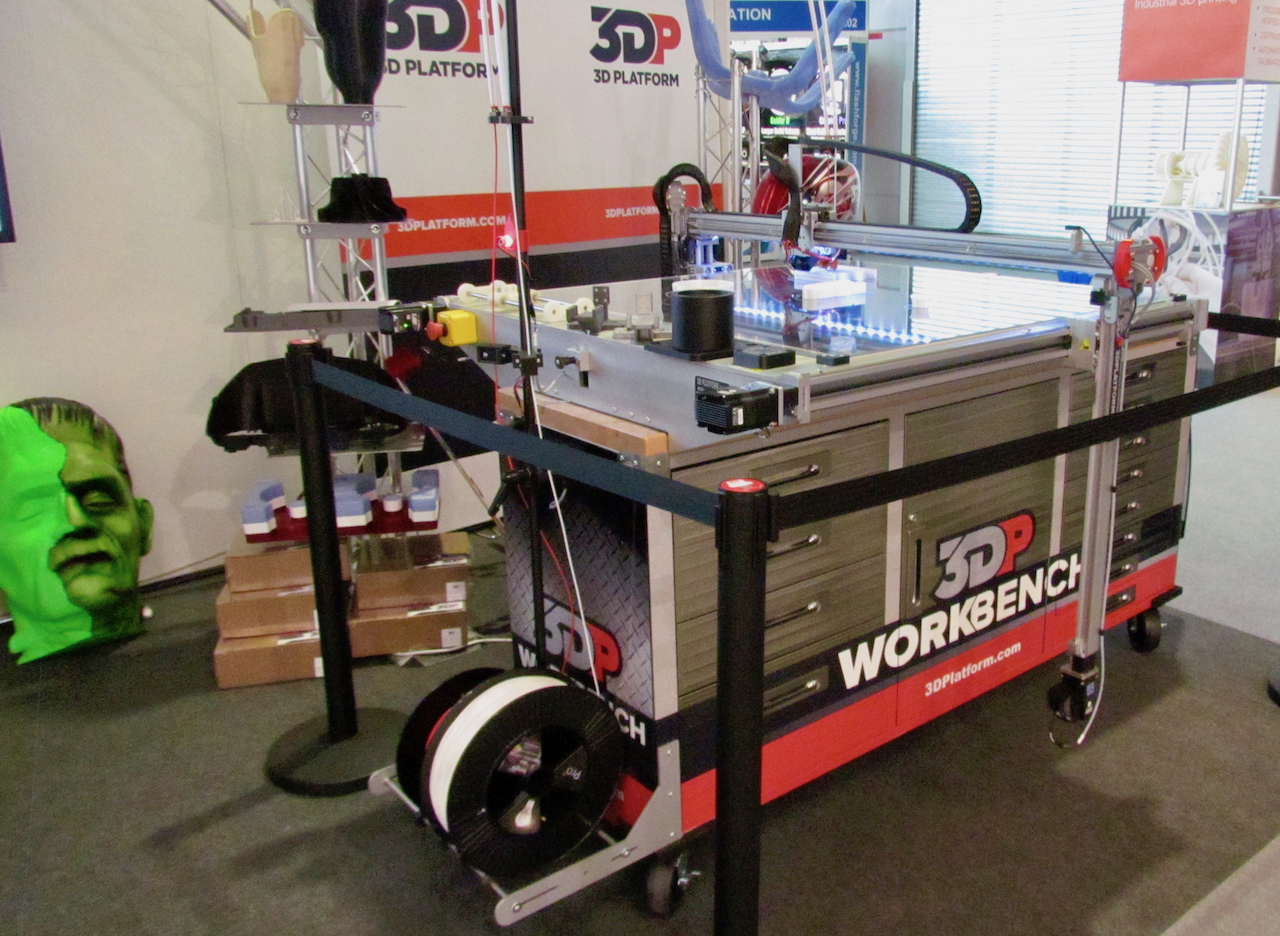
You might be familiar with 3D Platform, a company dedicated to making large-format 3D printers. Now it seems they’re working on ways to make large prints much faster.
Many of the currently available large format 3D printers are simply scaled up versions of RepRap-style extrusion machines. This style of machine works perfectly well at the small scale, but there are some challenges to overcome when the dimensions get a lot larger.
While there are certainly challenges with materials, the fundamental issue is the speed of printing. It’s fine for a desktop machine to produce a fist-sized object in three hours, but that print speed often becomes excessive at scale. Remember, doubling the size of one axis means eight times as much volume to print. And in the case of prints the size of 3D Platform’s units, that means an awful lot of printing.
For such machines, print elapsed times of many days or even weeks is not uncommon.
Extreme durations are certainly achievable due to the robustness of machine design, but will clients really want to wait that long for printing? Is there a way to speed things up? 3D Platform is doing some work in this area, as it would be a great advantage for not only their current equipment, but also for the larger gear they’ve proposed recently.
What have they been working on? Two things.
First, they’ve been experimenting with massively thick 6mm filament. This is a much larger filament offering 4X as much volume per millimeter of filament than the more common 3mm filaments, and almost 12X as much as 1.75mm filament found in many desktop units.
This “fat” filament could deliver a lot more plastic to the hot end, theoretically speeding up printing. Of course, this will likely be matched with appropriately-sized hot end nozzles in excess of 1mm in diameter.
The second innovation being developed by 3D Platform is enhanced heating. They’ve been working on a 300W heating element for their hot and and in future intend on offering a 900W version. This added power enables plastic to move much more rapidly through the hot end: more energy can soften the plastic faster. In “cooler” machines, if you run the plastic too fast there isn’t enough time to soften sufficiently and a jam may result.
3D Platform suggests that these improvements may speed up 3D printing operations by up to 7.5X. That’s a very significant figure: imagine a gigantic one week print taking only a single day.
Or seven gigantic prints in a week.
Via 3D Platform

